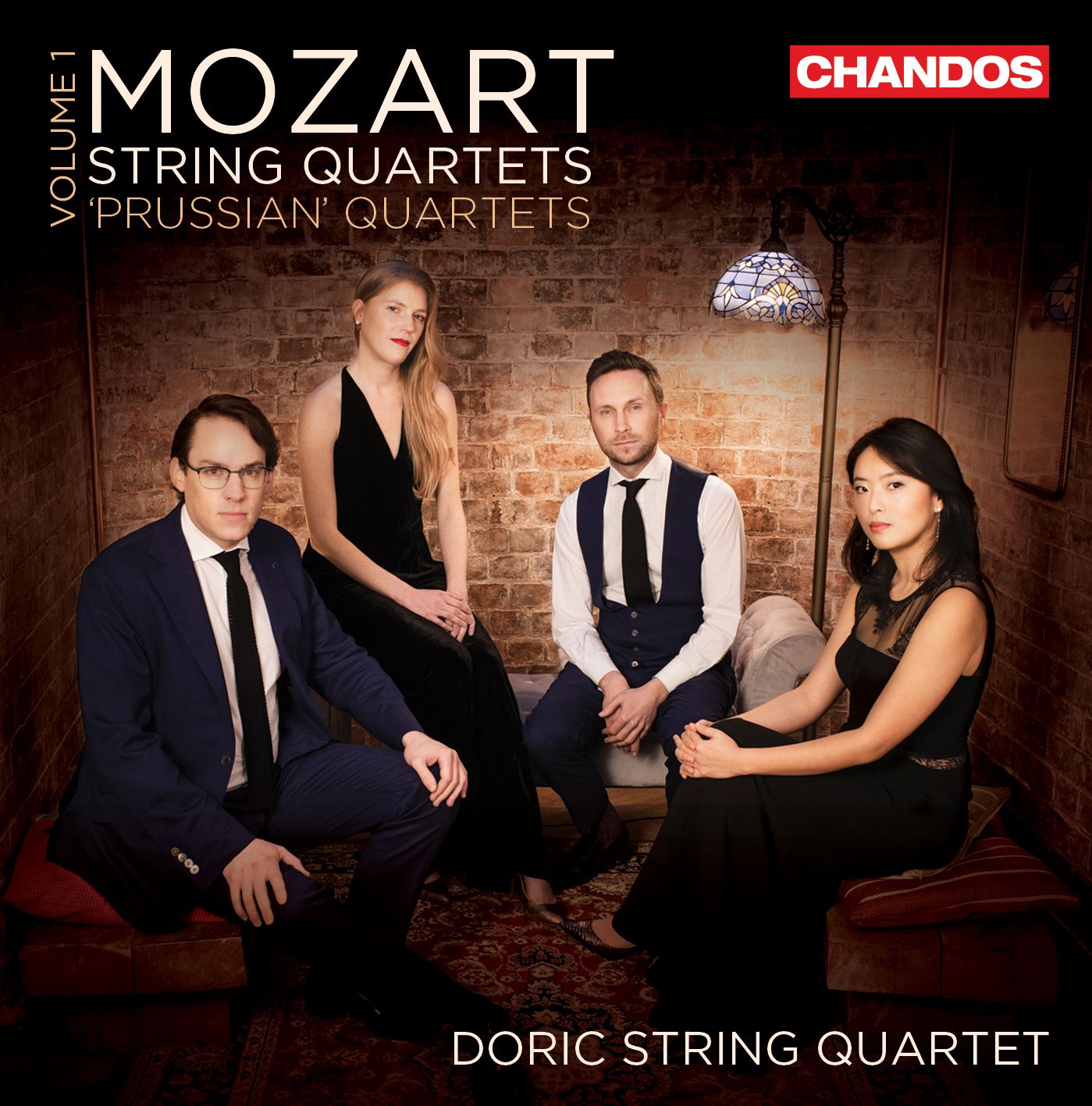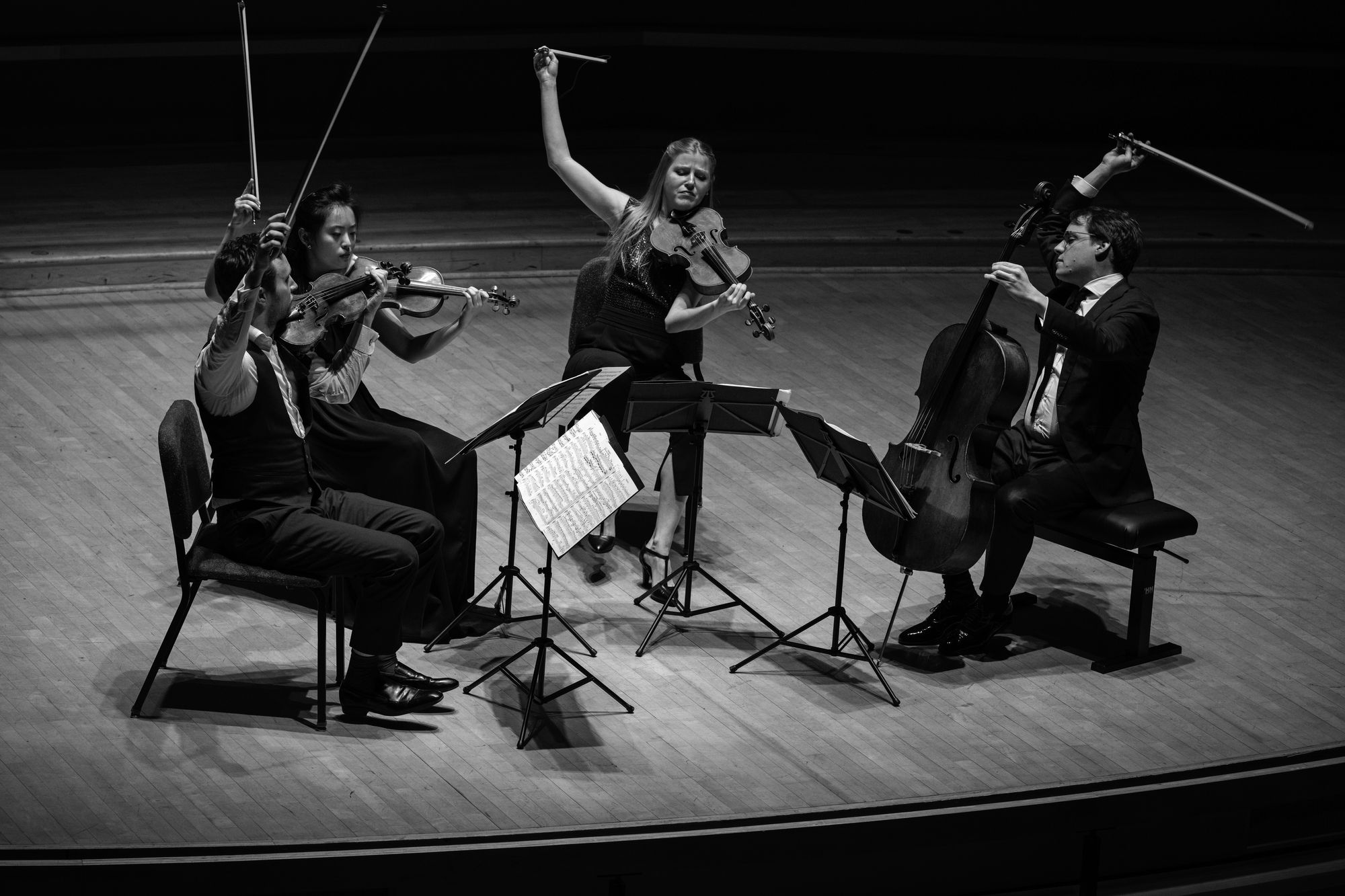Mozart "Prussian" Quartets, Volume 1
A superb new release from one of the finest string quartets around

The Doric String Quartet is rightly establishing itself as one of the finest young string quartets out there. Having heard them live, I can attest to their excellence (here, in Haydn - for which they are perhaps best known - and Beethoven).
Released on July 2, this twofer reveals the Doric Quartet to be just as much at home in Mozart. These quartets are known as "Prussian": towards the end of his life, short of money and heavily in debt, Mozart had visited King Friedrich Wilhelm II of Prussia (1744-97) – a famous patron of the arts and a keen and above-average musician. When hMozart performed for the King, he bagged a commission for a set of six string quartets, of which these are the only three completed.
Compositionally, these quartets represent a step forward in Mozart;s treatment of the four instruments. There is plenty of cello: King Friedrich was a viola da gambist-turned-cellist and so there is plenty for this instrument to do, often in a high register, which gives the instrument a new sense of freedom. This also means a new egalitarianism of register - a certain band of pitches can be played by any of the three instruments (violin, viola cello).

These performances are heavenly - particularly in the slow movements, in which the Doric unfailingly find a tempo that just feels right. Supported by a beautiful recording from Chandos, this will surely be one of the most cherished relerases of 2021.
Certainly there is a deep expressivity to the slow movement of the first quartet we hear here, the D major, K 575, and one can hear the sublime balancing of the four instruments:
... while the finale traverses a huge amount of terrain - this is no off-the-cuff jovial close:
To complement - and, indeed, celebrate - the recorded version, here's a link to a live, and complete, performance of K 575 at London's cherished venue, Wigmore Hall. Enjoy!:
When it comes to K 589 (B flat major), its the Menuetto and Trio I'd like to quote: far from a throwaway movement, the Trio, which begins harmlessly enough, contains substantially more development than we might reasonably expect:

The third and final quartet here is the F major, K 590, a quartet of wonders and riches, one that encompasses whole worlds. The simplicity of the theme of the slow movement leads to a multiplicity of embellishments, the level of invention simply sublime, and how beautiful it all is in this performance, especially when Mozart thins the textures to skeletal levels:
... but the most impressive movmeent here, both in compositional and in performance terms, is the finale. Michael O'Loghlin in his excellent booklet notes compares this movement with its comparable movement in Mozart's "Jupiter" Symphony for levels of complexity, and how right his is. One difference of course is that the quartet ends softly ... an ending brought off brilliantly by the Doric Quartet:
Although all three quartets are in the customary four movements, the level of invention in each quartet - and, indeed, each movement - is remarkable. The peformances are equally impressive. The Doric Quartet's placing of sonorities is remarkably varied, including textures that one can locate within the HIP (Historically Informed Performance) movement, while Chandos' recording is splendidly alive.
